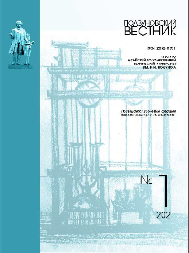IMPACT OF A POLYMER TYPE ON THE MINKOVSKY DIMENSION IN ASSESSMENT OF ELECTRIC CONDUCTIVE PROPERTIES OF MULTICOMPONENT MATERIALS
doi: 10.25712/ASTU.2072-8921.2021.01.024
Keywords:
macrostructure image, resistive composite polymers, carbon black filled polymers, fractal analysis, filled polymers, Minkowsky dimension, volume electrical resistance, ratio of nonlinearity, temperature coefficient, binderAbstract
In this paper, the structure‒property relationship of resistive composite polymers is analyzed, using electron microscope images is analyzed. Carbon black filled polymers with different binders are studied, and the influence of a polymer type on the conductivity is measured using calculated fractal Minkowsky dimension. Microscope images are processed with YUV and Otsy models.
It is proved experimentally that the value of the calculated Minkowsky dimension parameter decreases when the binders of studied polymers change from crystalline rubber to amorphous rubber. Also, this calculated parameter is matched with volume electrical resistance in normal conditions, with changes of volume electrical resistance due to swelling of a polymer caused by transformer oil, and with temperature resistance coefficient. It is found out that there is a correlational relationship between the calculated Minkowsky dimension and studied electrophysical properties of polymers, and there are different variation ranges of studied parameters. Experiments prove that calculated fractal Minkowsky dimension can be used to estimate the influence of a polymer type on volume electrical resistance and its stability under various operational factors, as well as the suitability of a specific binder for a composite polymer.
Downloads
Published
How to Cite
Issue
Section
License
Copyright (c) 2021 Natalia N. Minakova

This work is licensed under a Creative Commons Attribution 4.0 International License.















 .
. This work is licensed under a
This work is licensed under a 
